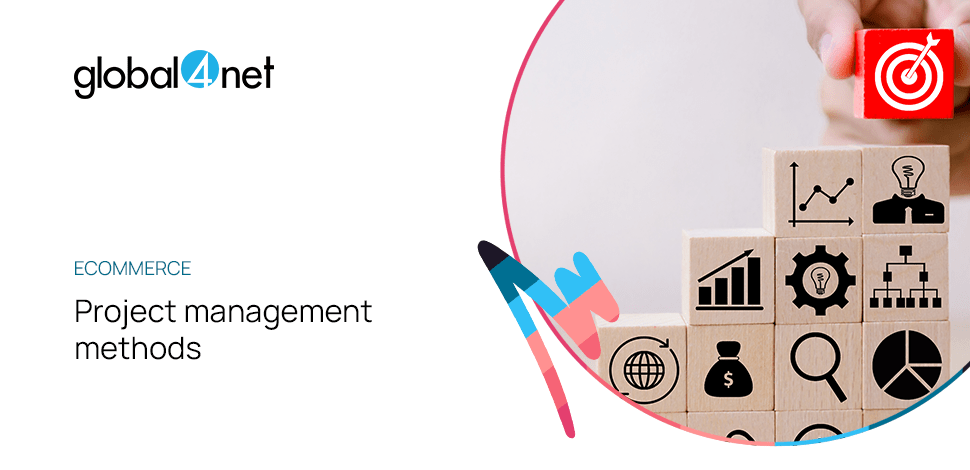Project management methods

In order to standardize processes and achieve their maximum efficiency, modern IT companies use various methodologies of project management. Each of them defines a set of specific rules, guidelines, tools, and communication channels. They enable effective cooperation of all involved parties and thus, deliver quick and error-free effects. Methodology selection should depend on the client’s expectations and their business needs, which is what we will talk about today.
In this article, we will explain why you should use different project management methodologies and what choices you have (we’re going to discuss three main types of such methodologies).
Why should you use a project management methodology?
Adequate project management methodology in IT allows you to optimize your specialists’ work and improve the software development process. While a dedicated Project Manager handles communication with a client and a process organization, programmers can focus on their duties. This leads to an increase in their efficiency and reduces unnecessary errors or delays.
Project management methodologies have been developed to provide high-quality services, lower costs, and reduce risk. However, in order to use the maximum potential of specific solutions, it is necessary to adjust them to the goals pursued. Below, you will find short descriptions of the most commonly used project management methodologies.
Waterfall – a cascade methodology
This is a classic approach to project management. It divides a process into six following phases:
- Conception
- Analysis
- Design
- Construction
- Testing
- And maintenance
All phases should be carried out in a strictly defined sequence, without any aberrations. Therefore, the Waterfall methodology is characterized by a high level of detail and a rather rigid nature. It is the best solution for repetitive projects with precise requirements.
PRINCE2
The PRINCE2 (Projects in Controlled Environments) methodology is based on cascade management. It introduces a high level of supervisors’ control and a clear division of roles and responsibilities in a team. It is characterized by transparency and the necessity of keeping detailed documentation. It is a perfect solution for very complex processes.
Agile – more modern methodology
This concept is based on the team’s flexibility and quick reactions to changes, even at the cost of returning to the earlier phases of the process. The Agile methodology focuses on continuous improvement and divides a project into short cycles (so-called sprints) and small tasks. At the end of each of the 3-5 such steps, the team verifies the effects and, based on the results, sets the next priorities and goals. As a highly flexible solution, this model works best for unpredictable projects and undefined expectations. It can also take various forms:
SCRUM
This method is based on the Agile model and has similar goals. However, it is distinguished by a strong focus on teamwork. A project includes not only programmers but also a Product Owner and a Scrum Master. The main principles of this approach are:
- Empirical process control
- Dividing a process into time boxes
- Strong teamwork
- Self-organization of multifunctional teams
- Tasks prioritization
- Iteration
KANBAN
This is yet another model based on the Agile methodology. It focuses on the continuous workflow and its transparency. The key tool, in this case, is the Kanban board, which allows specialists and clients to track the progress. Typically, software such as Jira or Trello is used to manage projects. The main principles of this method include:
- Creating lists of tasks to be done
- Keeping the limits of tasks in progress
- Continuous testing and development of new features
LEAN
The lean methodology has all the attributes of the Agile model, with the focus on team involvement and the elimination of the so-called waste. Here, we talk primarily about all the resources that have no value for the customer at the end of the day. The key to lean methodology is also “making decisions as late as possible” (based on current results, not forecasts) and “delivering results as soon as possible” (thanks to the use of appropriate resources).
Hybrid methodology (Waterfall + Agile)
A solution that combines the greatest advantages of the Waterfall and Agile management approaches is also worth mentioning. In this case, on the one hand, the client’s requirements are carefully analyzed, and on the other hand, work is based on iteration. As a result, the team is provided with detailed data and complete documentation but can react quickly to any changes. This methodology is therefore perfect for moderately complex projects with a well-defined concept, which, however, leaves room for experiments.
Which project management methodology should you choose?
Only the most popular project management methodologies are presented above, although you have many more at your disposal. To choose the right solution, analyze your client’s business goals, define their formal and technical requirements, assess the size and scope of the project and its tolerance to changes. Remember that each software development process may require a different approach!








